
01) "pale area on upper breast is wrong for TUDU":-
while this is a bit odd-looking, it is not a known feature of
any scaup or of a potential hybrid, so it does not make it more
likely to be something other than TUDU - and the examples below
show that some TUDUs do have a pale upper breast (albeit partially
caused by lighting - but this also looks to be true for the Benbrook
bird).
02) "white patch at the base of the bill is too large":-
in a couple of the photos the white patch seems to be much larger,
but this is an artifact caused by the low, strong sunlight; looking
at all the photos of this bird, it seems clear that the white
patches are not very large, they do not go below the gape-line,
and they break up above the bill. The TUDU examples show that
this is not particulary close to the extreme for TUDU.
03) "headshape not quite right":- head shape is perhaps
the most variable feature on TUDUs, and our impression is strongly
influenced by the presence/absence of a visible tuft. The shape
of the small tuft on the Benbrook bird was such that when not
fluffed-up, it merged into the "head-line" at the rear
of the crown, changing the appearance of the rear crown. In the
one profile image where the tuft can be seen to be standing out
from the rest of the head feathers (TXA), the shape of the rear
crown looks different and is a good match for many TUDU.
04) "bill is too large, wrong shape, and wrong pattern":-
this was the main potentially significant "problem"
mentioned for the Benbrook bird. Certainly the bill is not classic
TUDU, but there is enormous variation in size, and a high degree
of variation in shape and pattern, with numerous birds having
a quite GRSC-like bill or a smaller-than-standard black tip (yet
otherwise looking normal for TUDU) - as a browse through the examples
here demonstrates. Should all these birds with non-classic bills
be deemed hybrids? If such birds are part of the normal variation
in TUDU, then the Benbrook bird would seem to fit into that variation.
05) "wing pattern not seen":- I feel that this is not
significant, because the only realistic potential hybrid candidate
(if this is not a TUDU) is GRSC x TUDU - and these two taxa have
such similar wing patterns with such overlap, that any pattern
seen would be just as valid for TUDU as it would be for GRSC x
TUDU (or pure GRSC). To be sure, had the wing been seen to be
TUDU/GRSC-like, it would have further helped to rule out other
possibilities involving RNDU and/or LESC, but I feel that there
is already plenty of evidence in the photos and description to
rule these out
Here is a large series of TUDU images, with some images of the
Benbrook bird mixed-in to allow side-by-side comparison; some
images have been cropped to save space/download time. All these
images are copyrighted, and I have not been able to get formal
permission to use all of them; this is a fully non-profit web
site dedicated to furthering bird identification, and as such
I hope such usage will be tolerated. If any photographer objects
to his/her work appeareng on this page, please notify me and I'll
remove it, with my apologies :-
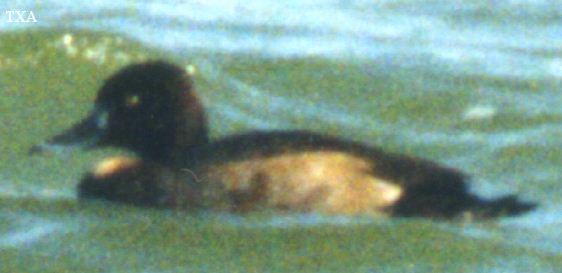

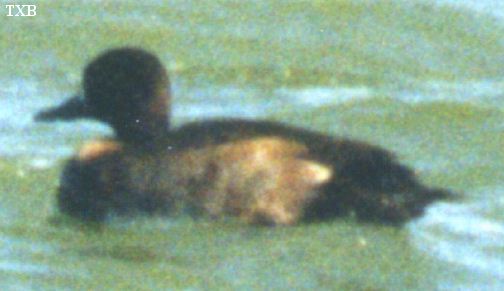
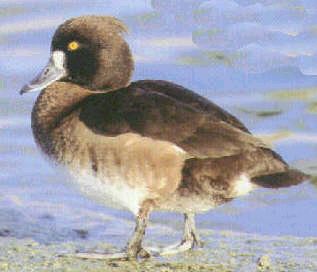
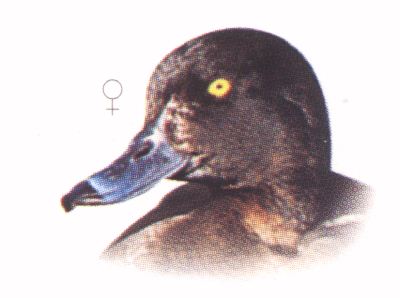
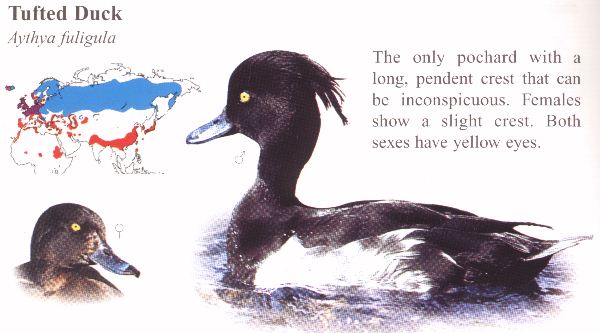


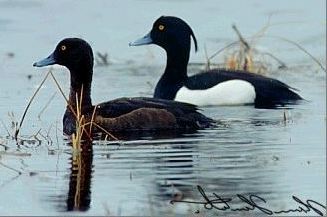
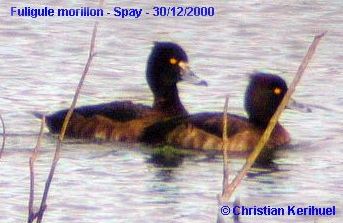
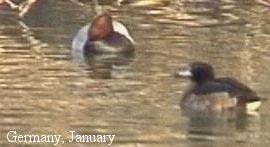
note the bill pattern on the bird below (taken in Europe to document
the vagrant LESC):

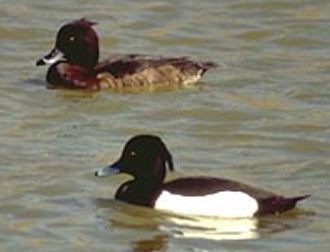



two images below are from photo documenting LESC in Tenerife,
Canary Islands:

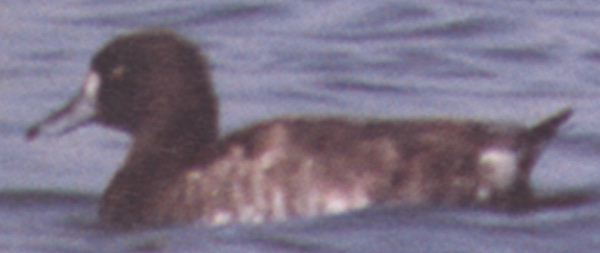
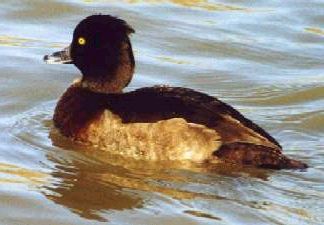
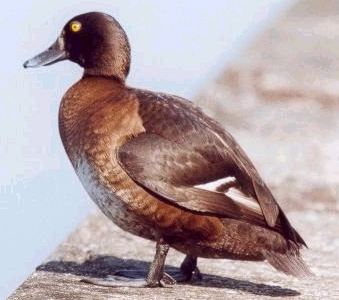
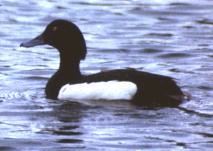
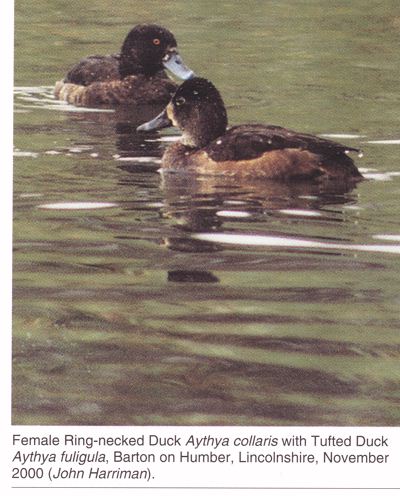
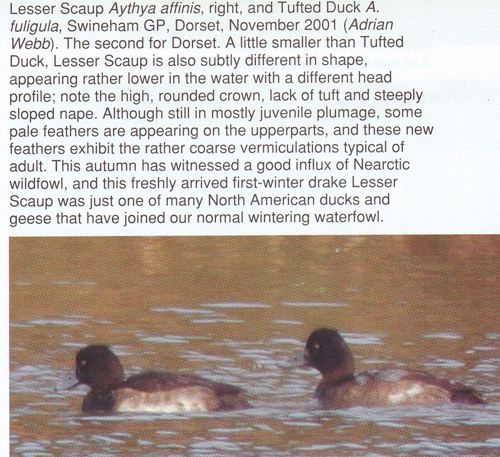
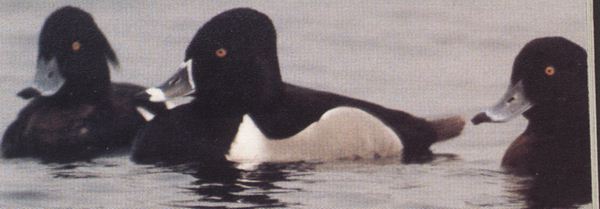
Two examples of how the jizz changes when the tuft is "removed":
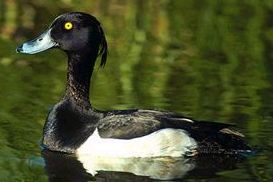

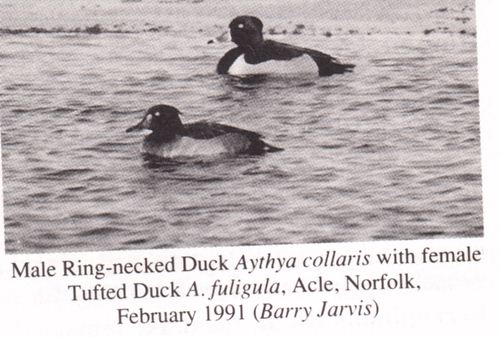
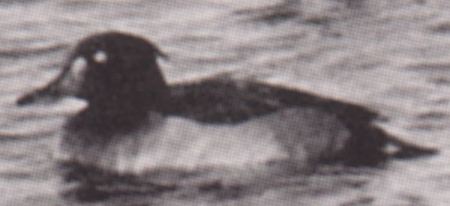
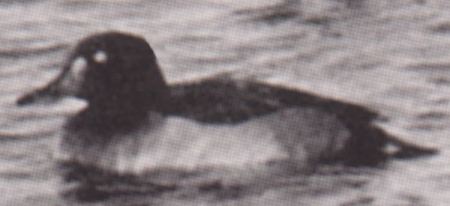
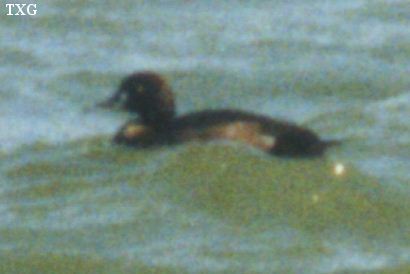
Tufted Ducks in Scotland, by Bernie Zonfrillo:
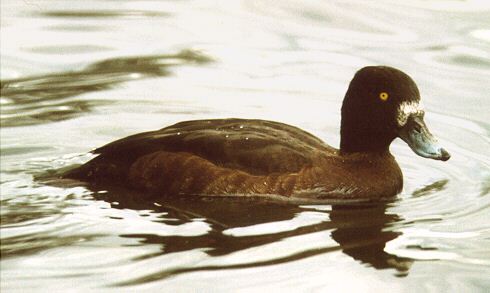
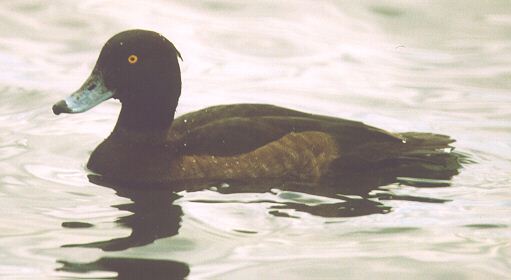
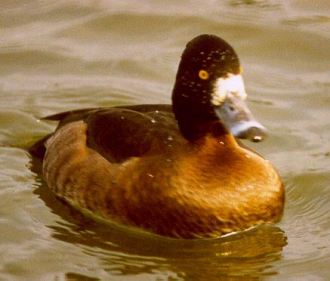
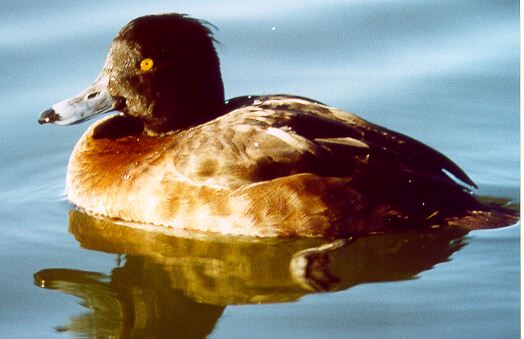
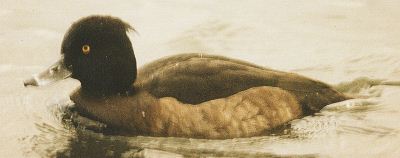
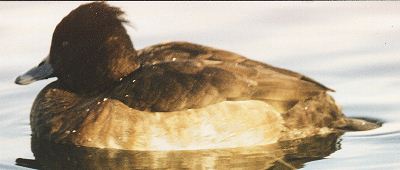
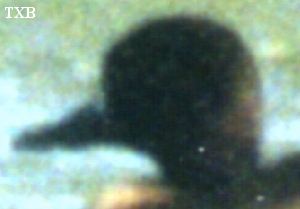
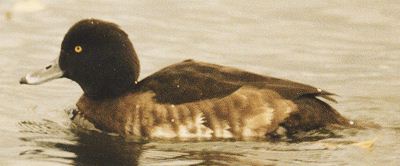
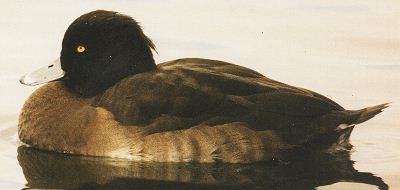
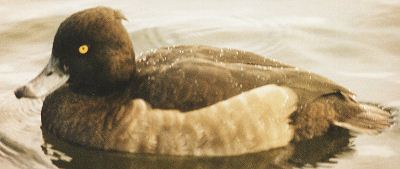
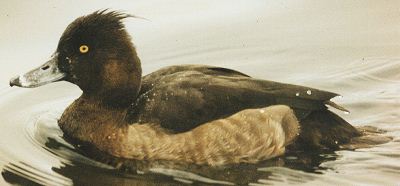
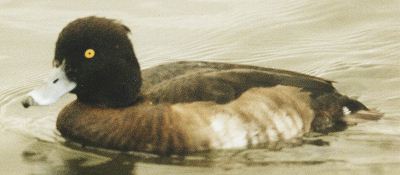
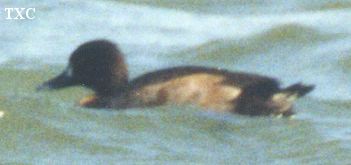
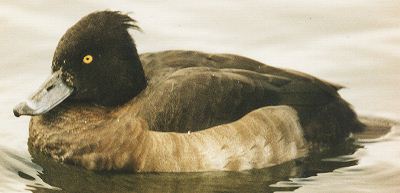
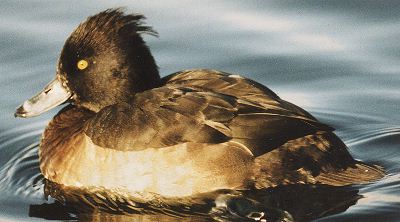
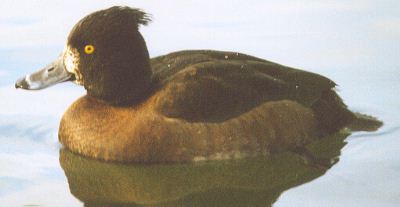
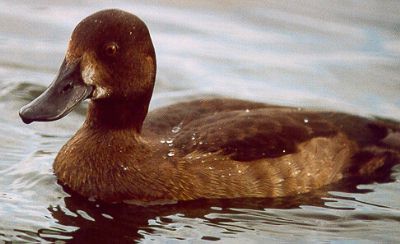


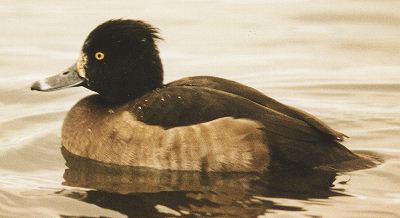
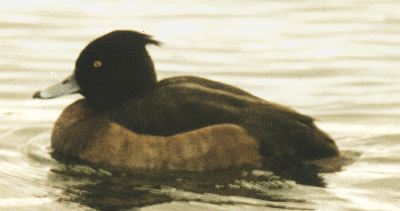
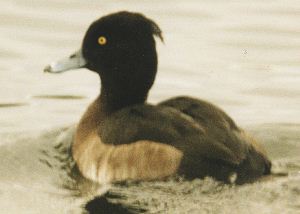

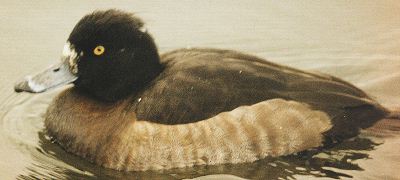
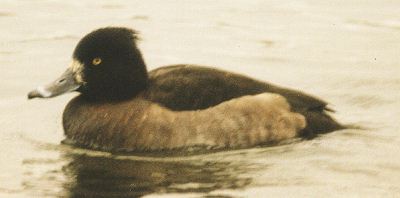
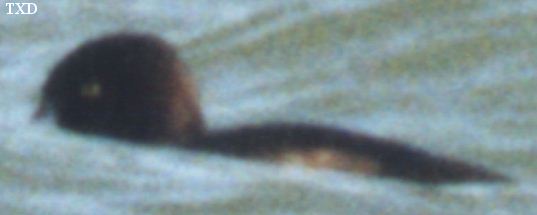
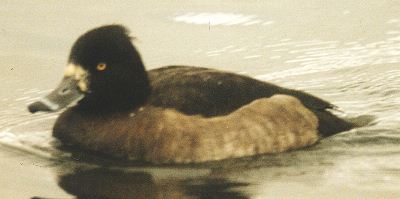
Images of vagrant TUDUs in North America:-
from Nova Scotia:
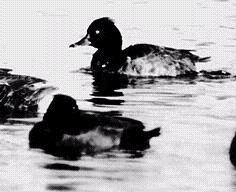
birds from California:

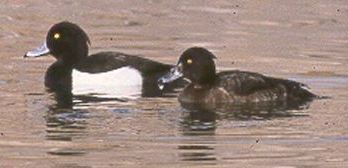

Does the female here look any less GRSC-like (in head and bill
shapes) than the Benbrook bird? would it be acceptable as a TUDU
if the male was not present?:
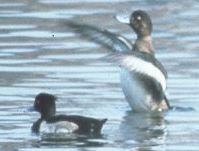
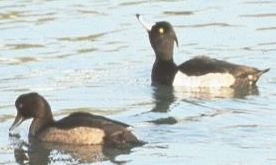
New images added Jan 13, 2002:
This French bird from November has no tuft at all, and light,
warm mottling on the upper chest, like the Texas bird:
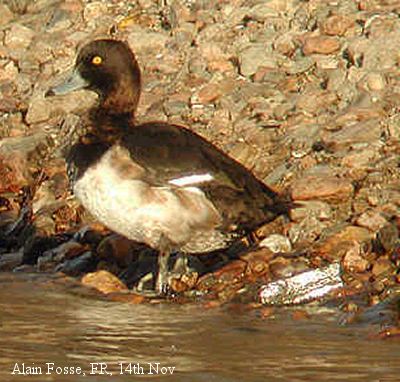
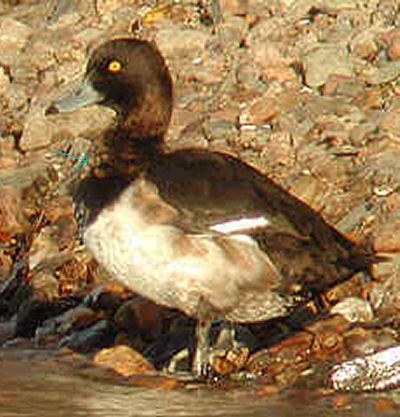
In the following image from Korea in winter, I've superimposed
two cuts of the Texas bird, for comparison:

images below are from Taiwan, and UK:

